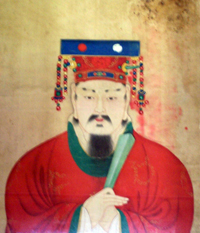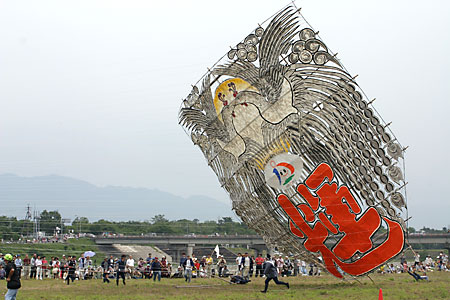|
Gim Yu-sin
Gim Yu-sin (sometimes romanized Kim Yu-shin, Gim Yu-sin, or Gim Yu-shin) (595 – 18 August 673) was a Korean military general and politician in 7th-century Silla. He led the unification of the Korean Peninsula by Silla under the reign of King Muyeol and King Munmu. He is said to have been the great-grandchild of King Guhae of Geumgwan Gaya, the last ruler of the Geumgwan Gaya state. This would have given him a very high position in the Silla bone rank system, which governed the political and military status that a person could attain. Much of what is known about Gim's life comes from the detailed account in the ''Samguk Sagi'', Yeoljeon 1-3, and the much briefer record in the ''Samguk Yusa'', vol. 1. Early years Gim Yu-shin was the son of General Gim Seohyeon (the second son of General Gim Mu-ryeok) and Lady Manmyeong, who was a daughter of Gim Sukheuljong (, King Jinheung of Silla's younger brother). He was born in Manno county(this is present-day Jincheon County) in 5 ... [...More Info...] [...Related Items...] OR: [Wikipedia] [Google] [Baidu] |
Silla
Silla or Shilla (57 BCE – 935 CE) ( , Old Korean: Syera, Old Japanese: Siraki2) was a Korean kingdom located on the southern and central parts of the Korean Peninsula. Silla, along with Baekje and Goguryeo, formed the Three Kingdoms of Korea. Founded by Hyeokgeose of Silla, of the Park family, the Koreans, Korean dynasty was ruled by the Kim (Korean surname)#Gyeongju, Gyeongju Gim (Kim) (김, 金) clan for 586 years, the Park (Korean surname)#Miryang, Miryang Bak (Park) (박, 朴) clan for 232 years and the Seok (Korean surname)#Wolseong, Wolseong Seok (석, 昔) clan for 172 years. It began as a chiefdom in the Samhan confederacies, once allied with Sui dynasty, Sui China and then Tang dynasty, Tang China, until it eventually conquered the other two kingdoms, Baekje in 660 and Goguryeo in 668. Thereafter, Unified Silla occupied most of the Korean Peninsula, while the northern part re-emerged as Balhae, a successor-state of Goguryeo. After nearly 1,000 years of rule, ... [...More Info...] [...Related Items...] OR: [Wikipedia] [Google] [Baidu] |
Goguryeo
Goguryeo (37 BC–668 AD) ( ) also called Goryeo (), was a Korean kingdom located in the northern and central parts of the Korean Peninsula and the southern and central parts of Northeast China. At its peak of power, Goguryeo controlled most of the Korean peninsula, large parts of Manchuria and parts of eastern Mongolia and Inner Mongolia. Along with Baekje and Silla, Goguryeo was one of the Three Kingdoms of Korea. It was an active participant in the power struggle for control of the Korean peninsula and was also associated with the foreign affairs of neighboring polities in China and Japan. The ''Samguk sagi'', a 12th-century text from Goryeo, indicates that Goguryeo was founded in 37 BC by Jumong (), a prince from Buyeo, who was enthroned as Dongmyeong. Goguryeo was one of the great powers in East Asia, until its defeat by a Silla–Tang alliance in 668 after prolonged exhaustion and internal strife caused by the death of Yeon Gaesomun (). After its fall, i ... [...More Info...] [...Related Items...] OR: [Wikipedia] [Google] [Baidu] |
Gyeongju
Gyeongju ( ko, 경주, ), historically known as ''Seorabeol'' ( ko, 서라벌, ), is a coastal city in the far southeastern corner of North Gyeongsang Province in South Korea. It is the second largest city by area in the province after Andong, covering with a population of 264,091 people (as of December 2012.) Gyeongju is southeast of Seoul, and east of Daegu. The city borders Cheongdo and Yeongcheon to the west, Ulsan to the south and Pohang to the north, while to the east lies the coast of the Sea of Japan. Numerous low mountains—outliers of the Taebaek range—are scattered around the city. Gyeongju was the capital of the ancient kingdom of Silla (57 BC – 935 AD), which ruled about two-thirds of the Korean Peninsula at its height between the 7th and 9th centuries, for close to one thousand years. Later Silla was a prosperous and wealthy country, and its metropolitan capital of Gyeongju was the fourth largest city in the world. A vast number of archaeological s ... [...More Info...] [...Related Items...] OR: [Wikipedia] [Google] [Baidu] |
Songhwa Mountain
Songhwa County is a county in South Hwanghae province, North Korea. Administrative divisions Songhwa county is divided into 1 '' ŭp'' (town) and 10 '' ri'' (villages): History The area was called Kuŭlhyŏn (仇乙縣) or Kulch'ŏn (屈遷) in the Koguryŏ era. It became part of Songhwa County in 1895, and in March 1909, Songhwa County was merged with P'ungch'ŏn County. Songhwa county was recreated in the 1952 reorganisation of North Korea's administrative divisions. The northwestern section of the county was split off in 1967 to create Kwail county. Transportation Songhwa county is served by the Changyŏn and Ŭllyul lines of the Korean State Railway The Korean State Railway (), commonly called the State Rail () is the operating arm of the Ministry of Railways of North Korea and has its headquarters at P'yŏngyang. The current Minister of Railways is Chang Jun Song. History 1945–195 .... References Counties of South Hwanghae {{NorthKorea-geo-stub ... [...More Info...] [...Related Items...] OR: [Wikipedia] [Google] [Baidu] |
Korean Sword
Korean swords have served a central place in the defense of the nation for thousands of years. Although typical Korean land battles have taken place in wide valleys and narrow mountain passes, which favor use of the spear and bow, the sword found use as a secondary, close-quarters weapon, especially useful during sieges and ship-to-ship boarding actions. Higher quality, ceremonial swords were typically reserved for the officer corps as a symbol of authority with which to command the troops. Ceremonial swords are still granted to military officials by the civilian authority to this day. Korean swords typically fall into two broad categories, the ''Geom'', and the ''Do''. The Geom is a double-edged weapon, while the Do is a single-edged weapon; although exceptions exist. In common parlance, all swords may be referred to as ''Geom ( Korean:검; 劍)''. The history of the sword in Korea begins with bronze daggers of Bronze Age of which existing artifacts dates back to 10-9th millenn ... [...More Info...] [...Related Items...] OR: [Wikipedia] [Google] [Baidu] |
Hanja
Hanja (Hangul: ; Hanja: , ), alternatively known as Hancha, are Chinese characters () used in the writing of Korean. Hanja was used as early as the Gojoseon period, the first ever Korean kingdom. (, ) refers to Sino-Korean vocabulary, which can be written with Hanja, and (, ) refers to Classical Chinese writing, although "Hanja" is also sometimes used to encompass both concepts. Because Hanja never underwent any major reforms, they are mostly resemble to '' kyūjitai'' and traditional Chinese characters, although the stroke orders for some characters are slightly different. For example, the characters and as well as and . Only a small number of Hanja characters were modified or are unique to Korean, with the rest being identical to the traditional Chinese characters. By contrast, many of the Chinese characters currently in use in mainland China, Malaysia and Singapore have been simplified, and contain fewer strokes than the corresponding Hanja characters. In J ... [...More Info...] [...Related Items...] OR: [Wikipedia] [Google] [Baidu] |
Hangul
The Korean alphabet, known as Hangul, . Hangul may also be written as following South Korea's standard Romanization. ( ) in South Korea and Chosŏn'gŭl in North Korea, is the modern official writing system for the Korean language. The letters for the five basic consonants reflect the shape of the speech organs used to pronounce them, and they are systematically modified to indicate phonetic features; similarly, the vowel letters are systematically modified for related sounds, making Hangul a featural writing system. It has been described as a syllabic alphabet as it combines the features of alphabetic and syllabic writing systems, although it is not necessarily an abugida. Hangul was created in 1443 CE by King Sejong the Great in an attempt to increase literacy by serving as a complement (or alternative) to the logographic Sino-Korean '' Hanja'', which had been used by Koreans as its primary script to write the Korean language since as early as the Gojoseon p ... [...More Info...] [...Related Items...] OR: [Wikipedia] [Google] [Baidu] |
Three Kingdoms Of Korea
Samhan or the Three Kingdoms of Korea () refers to the three kingdoms of Goguryeo (고구려, 高句麗), Baekje (백제, 百濟), and Silla (신라, 新羅). Goguryeo was later known as Goryeo (고려, 高麗), from which the modern name ''Korea'' is derived. The Three Kingdoms period is defined as being from 57 BC to 668 AD (but there existed Gaya confederacy in the southern region of the Korean Peninsula and relatively large states like Okjeo, Buyeo, and Dongye in its northern part and Manchuria of modern China). The "Korean Three Kingdoms" (Goguryeo, Baekje and Silla) contributed to what would become Korea; and the Goguryeo, Baekje and Silla peoples became what we know as the Korean people. The Book of Sui (Volume 81) recorded: "The customs, laws and clothes of Goguryeo, Baekje and Silla are generally identical." The three kingdoms occupied the entire peninsula of Korea and roughly half of Manchuria, located mostly in present-day China, along with smaller parts from pre ... [...More Info...] [...Related Items...] OR: [Wikipedia] [Google] [Baidu] |
Kite
A kite is a tethered heavier than air flight, heavier-than-air or lighter-than-air craft with wing surfaces that react against the air to create Lift (force), lift and Drag (physics), drag forces. A kite consists of wings, tethers and anchors. Kites often have a bridle and tail to guide the face of the kite so the wind can lift it. Some kite designs don’t need a bridle; box kites can have a single attachment point. A kite may have fixed or moving anchors that can balance the kite. The name is derived from kite (bird), kite, the hovering bird of prey. The Lift (force), lift that sustains the kite in flight is generated when air moves around the kite's surface, producing low pressure above and high pressure below the wings. The interaction with the wind also generates horizontal Drag (physics), drag along the direction of the wind. The resultant force vector from the lift and drag force components is opposed by the tension of one or more of the rope, lines or tethers to which t ... [...More Info...] [...Related Items...] OR: [Wikipedia] [Google] [Baidu] |
Gyebaek
Gyebaek, or Kyebaek (died 20 August 660In Lunar calendar, he died on 9 July 660.), was a general in the ancient Korean kingdom of Baekje during the early to mid-7th century. Little else is known of his personal life—including the year and location of his birth. The Last Battle In 660, Baekje was invaded by a force of 50,000 from Silla, supported by 144,000 Tang soldiers. Gyebaek, with only 5,000 troops under his command, met them in the battlefield of Hwangsanbeol. Before entering the battlefield, Gyebaek reportedly killed his wife and children to prevent them from being enslaved if he lost. His forces won four initial battles, causing severe casualties to Silla forces. General Gyebaek fought very courageously and killed many Silla soldiers. However, in the end, exhausted and surrounded, Gyebaek's army was outnumbered and overwhelmed. Baekje's forces were annihilated in battle along with their leader Gyebaek. Aftermath Baekje was destroyed, shortly after Gyebaek's defeat and ... [...More Info...] [...Related Items...] OR: [Wikipedia] [Google] [Baidu] |







